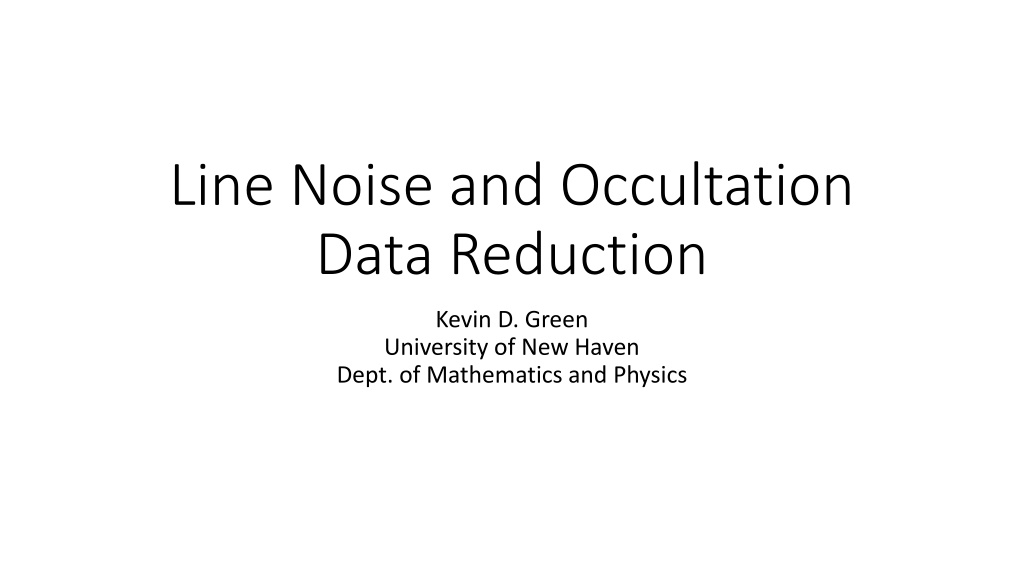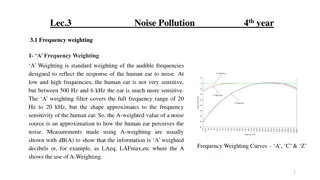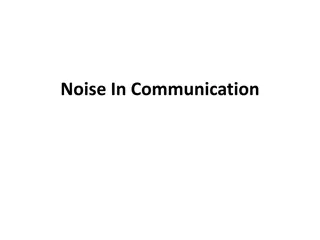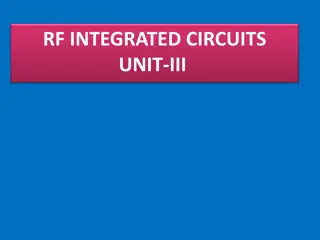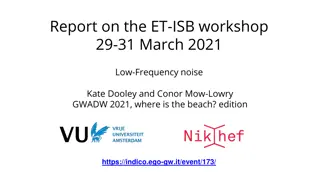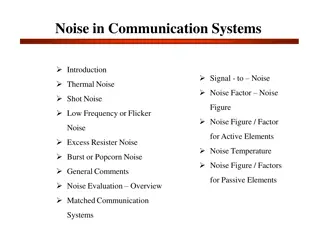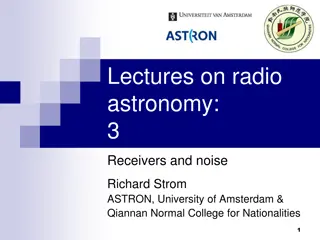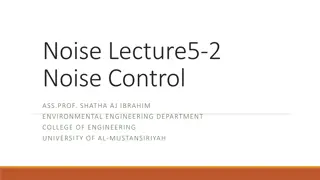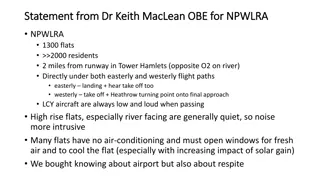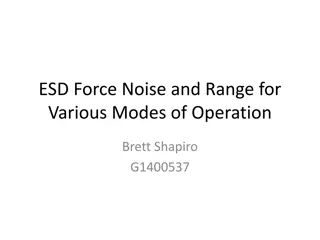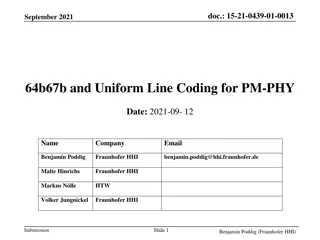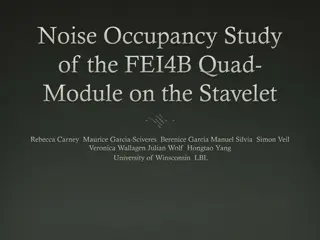Line Noise Reduction in Occultation Data
Interference in occultation images, like line noise, can impact data reduction. This article discusses how line noise affects data reduction, presents an example using the occultation of Titania, and proposes a correction algorithm involving median signal normalization to mitigate the effects of line noise. The comparison of images with and without normalization shows a reduction in standard deviation. The impact of this correction on the light curve and reference star is also explored, along with PY-OTE output details.
Download Presentation

Please find below an Image/Link to download the presentation.
The content on the website is provided AS IS for your information and personal use only. It may not be sold, licensed, or shared on other websites without obtaining consent from the author.If you encounter any issues during the download, it is possible that the publisher has removed the file from their server.
You are allowed to download the files provided on this website for personal or commercial use, subject to the condition that they are used lawfully. All files are the property of their respective owners.
The content on the website is provided AS IS for your information and personal use only. It may not be sold, licensed, or shared on other websites without obtaining consent from the author.
E N D
Presentation Transcript
Line Noise and Occultation Data Reduction Kevin D. Green University of New Haven Dept. of Mathematics and Physics
Interference or other types of noise can be observed in most occultation images. One type of interference shows up as horizontal or vertical lines. Line noise produces a non-uniformity in the background between frames and between reference stars and target. [The effect of line noise in this particular image is enhanced by changing the contrast.]
Does the line noise affect the data reduction and can it be removed? We use an actual example from an event earlier this year: (593) Titania This occultation path was found using Occult-4 (D. Herald) with the JPL ephemeris.
https://www.asteroidoccultation.com/observations/Results/Reviewed/Data2021/20210409https://www.asteroidoccultation.com/observations/Results/Reviewed/Data2021/20210409 _593_Titania_profile.GIF Actual result from 2 stations in CT: Greenwich (R. Bria) Westport (K. Green/C. Gao) Star magnitude: mv=13.9 Predicted magnitude drop: 0.7. Max duration: 5.6 seconds Equipment: Celestron-14 EdgeHD QHY174M-GPS
Correction Algorithm: (1) Find the median signal for a horizontal (or vertical) line. (2) Find departure of median value from the full image median value (median of median of horizontal lines). (3) Subtract off the difference: (median line value median of median value) from each pixel in each line. This can be added to a typical 2-D background field smoothing algorithm.
Comparison of same image with & without the median signal normalization. (Standard deviation reduced by 8.5%)
PY-OTE Output: S/N: 2.73 3.74 (Too good?) 1-sigma time uncertainty: 0.09 sec 0.06 sec. DR: 6.68+/-0.13 6.61 +/- 0.09
Comments The Event shown is a significant detection if light curve normalization is used. Image had 2x2 binning which can enhance the visibility of line noise (but also the signal) Line noise increases with increased Gain
Conclusions Line noise is quantifiable and can be removed. For very high S/N events, the end results will not be affected much. For lower S/N events, line noise correction can make the difference between detection and non-detection.
